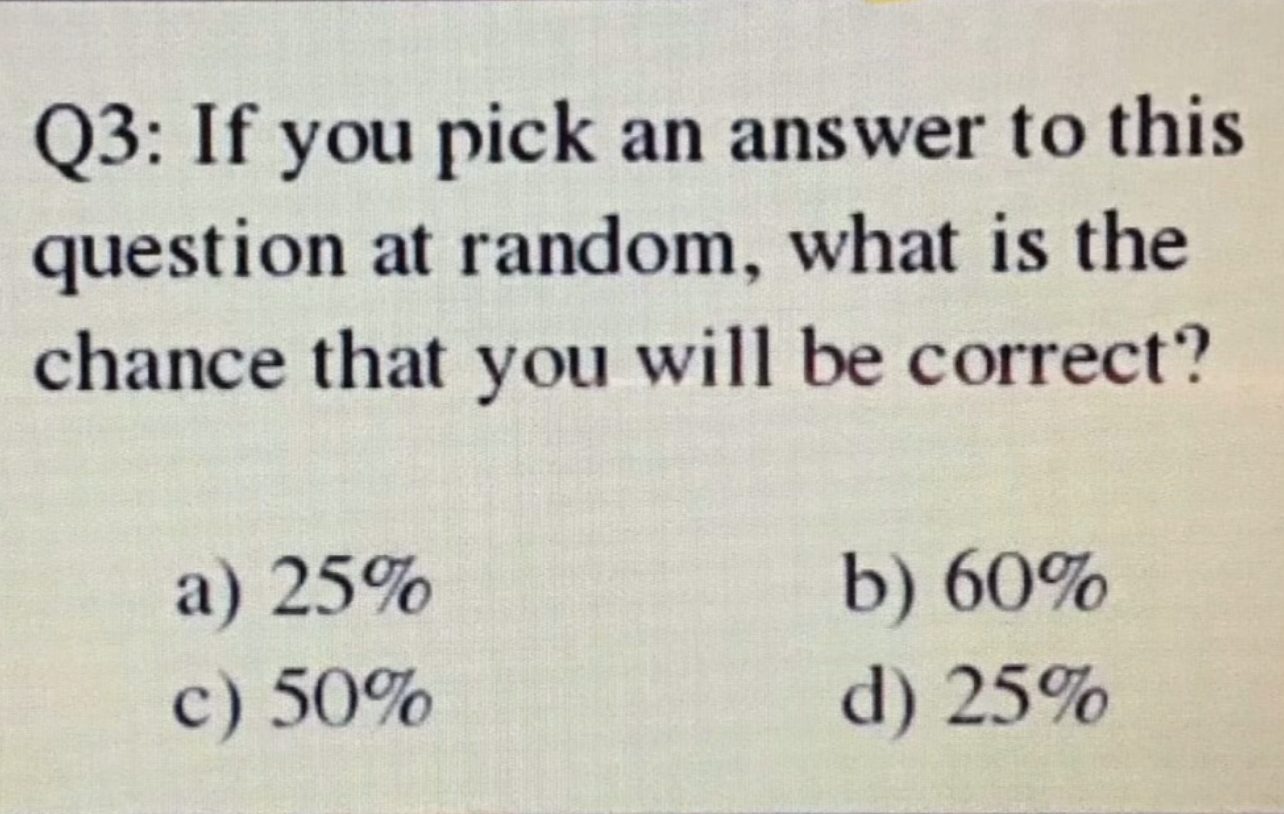Since two of them are the same, you have a 50% chance of picking something that is 33% of the possible answers. The other two, you have 25% chance of picking something that us 33% of the possible answers.
So 50%33% + 2 (33%*25%)= 33%
So your chances of being right is 33% cause there is effectively 3 choices.

